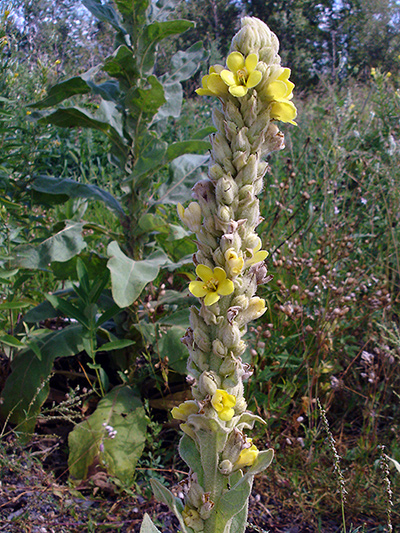
Distribution and localisation map
Common mullein
Verbascum thapsus
Grande molène
- Uses
- Presentation
- Identification
- Names
- Uses
Dietary
Common mullein is neither edible nor really toxic, the plant produces many beneficial substances for man, but it also produces rotenone, a ichthyotoxin (a pesticide) in small quantities.If its hair are irritating to some people, it is far from being the case for all, one has only to think of the common name for this plant in the American Southwest: Cowboy toilet paper!Poultry and goats consume without problems this plant, it is only fatal for aquatic insects and fish, the plant suffocate them, some Native Americans used the plant this way, it killed the fish without making them unfit for human consumption.Medicinals
The leaves of Common mullein contain saponins and mucilage, an infusion of leaves, filtered, gives an excellent expectorant.The essential oil of the flower is used against catarrh, colic, ear infections, frostbite and eczema.Recent studies have found that the flowers of the Common mullein contain antibacterial and anti-tumor compounds.Others
The floral stem, once dry and coated with a fuel (wax, pitch, etc. ..) can be used as a torch. His hair has been used as candle wick. Its dried stems can be used to make fire by friction. The dried leaves are used as insulation against the cold, great in boots and shoes. Flowers give green or yellow dyes.










